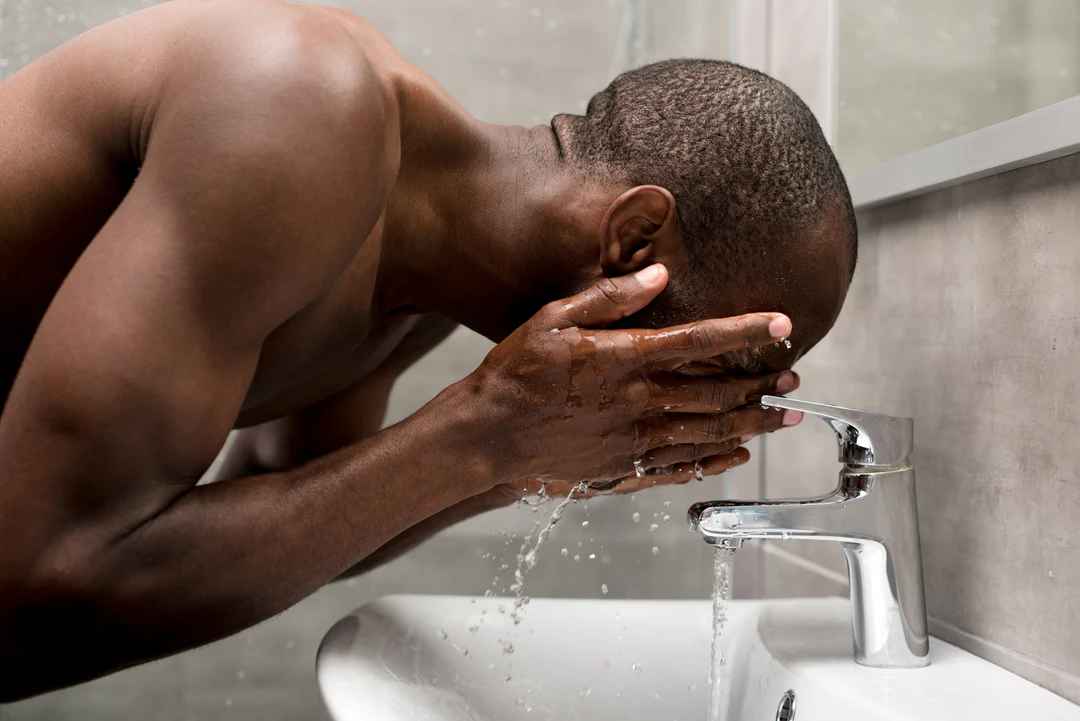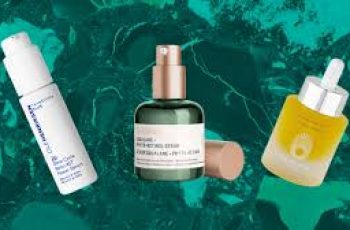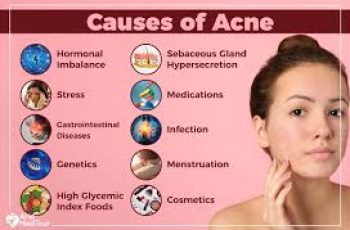Can I use Glycolic Acid and Lactic Acid Together?
Glycolic acid and lactic acid are both members of the Alpha Hydroxy Acid (AHA) family. Both ingredients help to chemically exfoliate the skin working on the outer surface and sloughing away the build-up of dead skin cells, dirt, and impurities. By ridding the face of this debris, you will find the skin appears fresher and more vibrant with fine lines and wrinkles notably reduced. You’ll find that your other skincare products are able to absorb rapidly and begin to show results quickly without having to compete with the barrier created by dead skin cells.
Each acid can be formulated with various percentage levels, with the most potent of the two being glycolic acid. Due to the molecular size being smaller it is able penetrate further down into the skin. This doesn’t necessarily mean glycolic acid is the most effective, it is however more suitable for those with a skin type that is combination or oily. For those with a dry skin type that is prone to mild sensitivity, lactic acid can step in and provide exfoliation without the worry of irritation. Compared to glycolic acid the molecular size of lactic acid is very large making it unable to penetrate too far into the pores, but instead works on the outer surface. It is also able to hydrate the skin surface thanks to the humectant traits of the acid enabling it to lock moisture into the protective barrier.
Now that I have given you a quicker refresher on the main benefits of these acids, let’s find out more about whether you can use glycolic acid and lactic acid together?
Can I use glycolic acid in the morning and lactic acid at night?
You could, but only if your skin remains happy and healthy with this routine. If you are wanting my advice, I would suggest using lactic acid in the morning and glycolic acid for the evening. Whichever acid you choose to use it is very important you apply a daily SPF of 30 and above, even on days that are cloudy.
The potency of the formulas and percentage of active levels will determine how they work on the skin. For example, face wash and toners contain a lower percentage in their formulations compared to serums and moisturisers.
Should I start with glycolic acid or lactic acid?
If you are new to acids, or perhaps you are wanting to use both in your routine, it is best to start gently. With this is mind, start by using lactic acid as it is gentler and offers an added boost of hydration, once your skin has built a tolerance to it you can swap it over to glycolic acid formulations. It is important to remember that with any skincare product you must perform a 24-hour patch test to ensure your skin remain comfortable and you avoid any unwanted irritation. If you have any concerns its best to consult with a doctor, dermatologist, or medical professional to give you some reassurance.
Is lactic acid a good exfoliator?
Yes, lactic acid is a great exfoliator, you’ll find that this acid is frequently blended into a variety of formulas. Having said that, the most common products containing active levels of lactic acid are toners and cleansers. When using an exfoliating toner, the percentage of the acid will be quite high but because toners are a product that generally don’t remain on the skin for extended periods of time, there is limited amount of skin irritation.
With lactic acid being the gentlest yet highly effective chemical exfoliant anyone would benefit from using it their daily skincare routine. However, if you have a skin type that is very oily or perhaps acne prone you may want to opt for a formula containing the BHA, salicylic acid.
Can you use glycolic acid after exfoliating?
No, it is best to avoid using glycolic acid after exfoliating. If it is a physical scrub you have used for exfoliation, I would strongly advise against using any other form of exfoliate on the skin. Although glycolic acid may feel as though it is not as potent on the skin compared to a scrub, it can in fact reach into the different layers of the epidermis. This can be overstimulating and will result in negative results such as, redness, flaking, itchiness and rashes. You will also find that when you over exfoliant the skin the natural oil, also known as sebum, is stripped leaving the face feeling dry and uncomfortable.
Does lactic acid stimulate collagen?
Yes, it does! When used regularly lactic acid can improve signs of ageing, such as fine lines and wrinkles as well as stimulating the production of collagen. After roughly 4 weeks you can expect to see an improvement on the over-all complexion. Signs of hyperpigmentation, dark spots, loss of elasticity and lack lustre finish to the skin are all improved with minimal disruption to the natural protective barrier.
Does glycolic acid lighten skin?
No, glycolic acid does not lighten the skin. It can however help combat uneven skin tone, darks spots and signs of hyperpigmentation. It can do this by working on the surface of the skin and sloughing away dead skin cell build-up. When there is a build-up of dead skin cells that are not removed the overall look of the complexion will appear dull and sallow. Dark spots and other forms of sun damage will also look darker, by removing the excess, unwanted layers you are removing the pigmentation of the areas of uneven skin tone giving you a brighter, even finish to the complexion.
Does lactic acid shrink pores?
Yes, it can make pores appear less visible, the trouble with pores is that once they have become enlarged, you are unable to shrink their size again. Having enlarged pores isn’t the end of the world, as difficult and frustrating they are, with the help of lactic acid you are able to keep them clear and unclogged of any build-up of impurities.
So, I hope that today I have answered some questions about using glycolic acid and lactic acid together. Don’t forget if you any other questions please come and follow us over on the Procoal Instagram.
DQH Knowledge drop: In your 20s, your skin cell turnover decreases. (Cell turnover is a key component in keeping your skin youthful.) You know what else slows down? Your collagen production. Starting in your 20s, collagen decreases by about 1 percent per year. Should you want to prevent fine lines and wrinkles, start by eliminating behaviors that contribute to premature aging. “If it’s bad for you, it’s bad for your skin,” says dermatologist Michel Somenek.
“Cigarette smoking reduces blood flow to the skin and causes premature wrinkling and a dull skin texture. Making the repeated pursed motion to inhale can also cause smoker’s lines. Alcohol and recreational drugs are toxins for the skin that damage its cellular structure and DNA,” Somenek tells us. “The faster you eliminate vices while you are young, the better chance your skin and body have to recuperate.” Also, adopting an anti-aging routine in your 20s is key. After all, the best offense is a good defense. We spoke to Somenek and experts Joshua Ross and Audrey Kunin to find out more.
Keep reading for the best anti-aging products for your 20s, according to skincare professionals.
Sunscreen
“We all know that the sun is the number one cause of skin aging and starting the prevention in your 20s is very important,” Ross says. “The majority of your sun damage won’t start to appear until you’re in your 30s, so don’t wait until you see it surface or you’ll be behind the curve. Stay ahead of it with a good-quality zinc-based sunscreen worn daily.”
Farmacy Green Defense Daily Mineral Sunscreen
An invisible sunscreen with SPF 30, plus botanical extracts meant to protect skin with tons of antioxidants. Bonus: It’s clean and fine to use under makeup.
Bareminerals Complexion Rescue™ Tinted Moisturizer Broad Spectrum SPF 30
Although we recommend you use your SPF and moisturizer separately, we also understand moments when you don’t have time or energy for that extra step. For those times, this bareMinerals moisturizer is a great thing to have on hand.
Vitamin C Serum
“A great introduction to anti-aging is to start with a vitamin C serum in your morning skincare routine,” Ross says. “It’s a powerful antioxidant that will neutralize free radicals and brighten the skin.” He adds that it’s a great way to counteract the effects of the sun’s harmful rays, which, as previously mentioned, are among the biggest causes of premature aging.
Drunk Elephant C-Firma™ Vitamin C Day Serum
The Drunk Elephant C-Firma is a lightweight serum that promises to give skin a glow by combining the brightening powers of vitamin C with ferulic acid, l-ascorbic acid, and vitamin E. The included sodium hyaluronate is meant to replace hydration loss, so you shouldn’t have to deal with any irritation.
Sunday Riley C.E.O. Rapid Flash Brightening Serum
This potent serum is jam-packed with vitamin C (15 percent, to be exact), which means it’s a potential superstar at both brightening skin and dousing it in antioxidants.
Peptides
Using peptides on your skin has many benefits, says Somenek. “The skin barrier is what defends the body against pollution, UV rays, bacteria, and toxins. It can be damaged by several everyday factors. Using topical peptides aids in building a stronger barrier,” he says. “Peptides comprise elastic fibers, which are a type of protein. These fibers help to make skin appear taut and firm. Peptides can also help repair damaged skin, relieve inflammation, and even out skin tone. Some peptides can kill acne-causing bacteria that is common in 20-somethings.”
Kunin agrees, saying, “Peptides are an excellent entry point for supporting collagen.” She recommends looking for face and eye treatments that contain these collagen-boosting powerhouses.
Charlotte Tilbury Magic Eye Rescue Cream
This Charlotte Tilbury super-emollient eye cream has a base of coconut oil and shea butter (read: it’s incredibly hydrating). Botanicals plus peptides are meant to help reduce dark circles and boost collagen, respectively.
This creamy moisturizer serves up potent collagen-boosting peptides and pycnogenol, and antioxidant-rich vitamin C. “Instead of sitting on top of the skin, peptides penetrate the outer layer so they go deep. The ‘signals’ they send tell the cells to produce elastin and collagen, which are needed for youthful-looking skin,” explains Somenek.
At-Home Peel Pads
Remember that skin cell turnover fiasco we talked about earlier? One way to help support it is by exfoliating. “Exfoliation is important to help keep skin fresh and luminous,” Kunin says. She recommends using at-home peel pads as an easy and effective way to exfoliate.
“The goal in your 20s is to fight the slowing pace of cell turnover. It is wise to use products that gently exfoliate, yet still remove oil and other impurities. Products that have Alpha Hydroxy Acids (AHA) or Beta Hydroxy Acids (BHA) are a good choice.”
According to Somenek, you should only exfoliate two to three times a week. “People of all ages are guilty of over-exfoliating and that can be too much of a good thing,” he says.
Dermadoctor Kakadu C Intensive Vitamin C Peel Pad
A few swipes of this Derma Doctor powerful peel pad promise to leave your skin glowing and smooth, thanks to the seven (yes, seven) types of chemical exfoliants, including AHA and BHA. It also contains vitamin C via Kakadu plum extract for added brightening and antioxidant protection.
KEY INGREDIENTS Kakadu plum extract is sourced from the Kakadu plum, a fruit grown in northern Australia. It contains vitamin C, which restores the skin’s natural barrier, increases collagen production, and soothes irritation.
Dr. Dennis Gross Skincare Alpha Beta® Universal Daily Peel Pads
These are the gold standard of peel pads, with a cult following and over 900 five-star reviews on Sephora. They’re easy to use and contain a blend of anti-aging exfoliating acids.
Emollient Night Cream
“In your 20s, you need to start upping the hydration in your skincare routine. You may have been cautious of over-moisturizing because of acne in your teens, but as you enter your 20s, your skin transitions and becomes drier,” Ross says. “I recommend an emollient night cream added into your evening skincare regimen.”
“Twenty-somethings need to make sure that they are not using creams that will clog their pores and cause excess oil production,” says Somenek. Opt for non-comedogenic products.
Cerave Skin Renewing Night Cream
One great choice is the CeraVe Skin Renewing Night Cream, which is a non-comedogenic night cream that leaves skin soft and glowy. It combines the moisturizing powers of ceramides and hyaluronic acid.
RoC Retinol Correxion Max Hydration Creme
“The best night cream ingredients contain retinol, benzoyl peroxide, and/or salicylic acid or hyaluronic acid. The goal is to moisturize, yet remove excess oil,” says Somenek. This Roc Retinol Correxion cream fits the bill as it contains both hyaluronic acid and retinol so it promises to moisturize while also being non-comedogenic.



